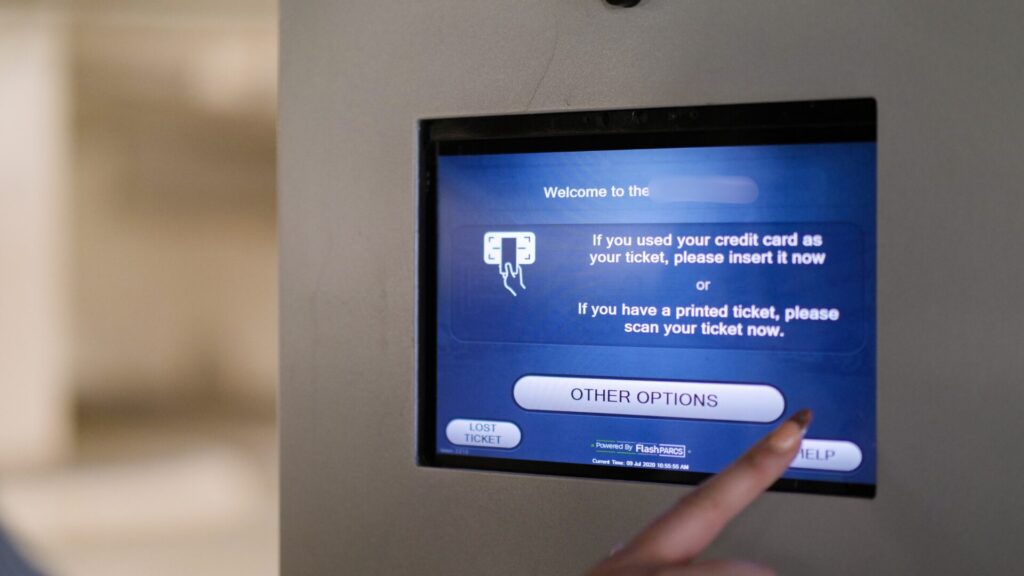
Picture this:
You’re sitting at the exit gate. You’ve scanned your ticket, inserted your card…and yet, the gate refuses to lift.
So, you do what we’ve all done. You pause. You sigh. You stare at the screen, willing it to work. And finally, you press for help.
That one small press is more than an action: it’s a moment of human psychology in motion.
The Moment of Frustration
Our 2025 Consumer Data Report revealed that 82% of consumers feel frustrated when parking, and 52% say they frequently encounter problems like confusing signage, unclear rules or payment glitches.
That means four out of five people are dealing with some level of friction before they even hit the button.
So, when they finally do, they’re not just asking for help – they’re asking for relief.
They want reassurance that they’re not crazy, clarity about what went wrong and speed to get out of the situation fast.
The Brain Behind the Button
Let’s break down what’s actually happening in that moment:
- Loss of control: The motorist expected a seamless process. The second it breaks, stress spikes.
- Uncertainty: They don’t know what’s wrong, and uncertainty is anxiety’s best friend.
- Hope: They see the button and think, maybe this will fix it.
- Relief: A calm voice answers, and the tension releases.
That’s not just customer service. That’s cognitive science.
And according to our report, the expectations behind that press are steep:
- 58% expect their call to be answered in under 20 seconds.
- 75% expect their issue to be resolved in under 2 minutes.
That’s why at Parker Technology, our average queue time is just 10 seconds, and we resolve most calls in 60 seconds. Meeting people where they are: stressed, stuck and hoping for help.
What People Really Want
Despite the rise of automation, AI and self-service systems, the data says it loud and clear:
People still want people.
- 50% of consumers prefer speaking with a live human via phone or video.
- Another 25% prefer waiting for an in-person attendant.
- Only one in four prefer digital tools (kiosks, etc.), and even then, only if they connect to a real human.
When someone presses that button, they’re not calling for software. They’re calling for someone who understands.
Why Human Connection Wins Every Time
Here’s the thing: the psychology of pressing the help button isn’t about technology failure, it’s about trust restoration.
That voice on the other end of the intercom isn’t just solving a technical glitch. They’re solving an emotional one.
They’re defusing frustration, restoring confidence and turning a negative encounter into a moment of gratitude.
That’s why Parker Technology’s solution (humans supported by technology) works so well. Our CSRs respond quickly, professionally and empathetically, while our software tracks data, streamlines calls and provides insights that make every future experience better.
When great tech and great humans come together, motorists feel heard, problems get solved fast and loyalty is retained.
Adding Voice AI to the Mix
Here’s the twist: we’re not afraid of technology, we’re excited by it.
That’s why we’re taking the next step in our product roadmap by introducing Voice AI into our platform. This isn’t about replacing people; it’s about enhancing scalability, speeding up response times and giving our CSRs more bandwidth to deliver the high-touch service our clients value most.
Voice AI will handle repetitive, low-complexity interactions – things like ghost calls, ticket scans or simple payment instructions – so our CSRs can focus on the complex, high-value moments that matter.
Think of it as another layer of support, one that helps absorb call volume during busy times, keeps response times quick and gives our specialists more bandwidth to deliver the empathetic, high-touch service our clients count on.
AI is a tool, not a replacement. And just like every other part of our solution, it’s backed by the same promise Parker has always kept: quality, reliability and a human safety net. If AI can’t resolve an issue, one of our experts will always be there to step in.
This is simply the next chapter in our story. People and technology working together to make parking experiences smoother, faster and still deeply human.
The So What
Pressing the help button isn’t a sign of failure. It’s a sign of faith.
It means the motorist still believes someone can help. And when that call is answered quickly and kindly, that faith turns into trust.
That’s the psychology of the help button, and the heartbeat of what we do at Parker Technology.
Because when the gate won’t lift, technology alone isn’t enough. It takes a human touch to truly lift the experience.
Get the full story in our 2025 Consumer Data Report: When Tech Falls Short: Why Human Help Still Matters in Parking.
It’s proof that the future of parking isn’t just tech. It’s Tech + People.

Heidi Barber
VP of Marketing
Heidi Barker has 10+ years of marketing and sales experience, with a penchant for digital strategy, content creation and process development. She holds a B.S. in Marketing & International Business from Butler University.
